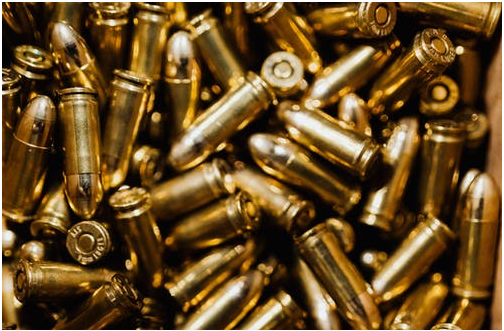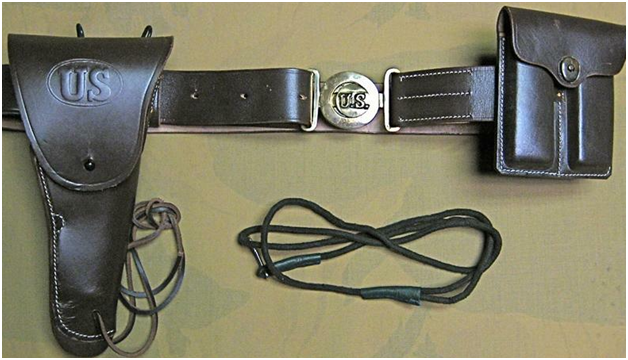1911 Frames: What You Need to Know
Feb 25th 2022
Since the 1911 was introduced into service over a century ago, it has become one of the most popular handguns in the world. It’s been reinvented and reimagined countless times and has even spawned manufacturers that specialized in producing 1911 lookalikes. Some of them, like Rock Island and Para Ordnance pistols, are very popular.
But the M1911 still reigns supreme at least in the minds of some shooters who wouldn’t trade it for the world.
But are all M1911 pistols the same?
The short answer is no, even when you remove customizations from the equation. It comes down, largely, to the 1911 frame around which the pistol was built. While at one point there was only one standard frame, today there are three popular options.
What Are the Different 1911 Frames?
For all intents and purposes, there are three main 1911 frames: the government frame, the commander frame, and the officer frame.
●Government frame: This is the classic 1911 frame that creates a full-size M1911. The government frame takes a 5-inch barrel, resulting in a complete pistol that is 8 ¼” in length and 5 ½” in height. They’re also typically 1 ½” at the grips and only 1” at the slide.
●Commander frame: This is the 1911’s answer to a “compact model.” Commander frames are slightly smaller than government frames, but the term “compact” is used loosely since they are hardly compact at all. The commander frame takes ¾” off the barrel and slide, making it slightly shorter and lighter. Otherwise, the dimensions are the same as the government frame.
●Officer frame: If you love the recoil operation, smooth-cycling, and easy handling of the M1911 but need the smallest package you can get, the officer frame is probably for you. There is some variability in officer frames, but they have shorter grips and slides. Most officer frames have a 4.8” (or shorter) height and take a 3.5” barrel, although there are shorter ones available.
There are other 1911-inspired subcompact pistols out there, like the Kimber Micro and Sig Sauer P938, which are built around even smaller frames. They may be better for concealed carry, as well as lighter and slimmer, but they’re also not true 1911 pistols. They’re also not available in the classic .45 ACP chambering of the 1911, paired with .380 and 9mm. That’s fine for some shooters, though. Plenty of 1911’s are chambered in 9mm, too.
Is the 1911 a Good Carry Gun?
The 1911 might not be the most modern design in circulation, but it has a loyal following and many still consider it to be an excellent choice in a carry gun. As old as it is, it has a few decent advantages in this department.
One is caliber. If you shoot a 1911 you’re probably shooting .45 ACP, which is fabled for its stopping power. However, you also have choices. There have been 1911s and variants manufactured in a wide range of other calibers, such as 9mm Luger, as well.

The 1911, despite being a fairly long pistol (even when built around the officer 1911 frame) is pretty thin. It’s not bulky and doesn’t have any parts that glaringly stick off the sides. Even a full-size 1911 could be as thin as an inch and a half. That makes them pretty easy to conceal, even under a relatively light shirt or jacket.
These pistols also have really great ergonomics. The grip angle is comfortable for most people and makes it easy and comfortable to point and shoot this pistol. It also balances pretty well.
A lot of shooters also like the fact that the 1911’s trigger only travels in one dimension - straight back. The trigger of a 1911 slides into the frame instead of being hinged on a pin. This gives the 1911 a crisp trigger that is reliable and enjoyable to work with.
What Holster Is a Good Match with a 1911?
If you decide to carry a 1911, it is important to pair it with a holster that can support and secure it comfortably. This is a matter of safety as well as comfort.
Since the 1911 (regardless of the frame it’s built on) is a fairly big pistol, a lot of people choose to carry them in shoulder holsters. This is the traditional way to carry, and it helps to support the weight of the pistol more comfortably. It’s important to train consistently if you carry from a shoulder holster, though, to prevent muzzling unintentional targets on the draw.
Others choose an OWB or IWB holster for a 1911. Despite their weight, these pistols are fairly slim and can be obscured within a waistband pretty easily. They’re also not uncomfortable when carried close to or against the body.
Regardless of the method you choose, make sure the holster fits your specific variant, prevents unintentional holstering, and prevents access to the trigger by completely covering the trigger guard.

Can I Build My Own 1911 with a 1911 Frame?
Yes, you can build a 1911 at home with a 1911 frame, but local laws vary. Some states have banned the purchase or possession of so-called 80% receivers (which in this case would be called an 80% frame).
These are frames that have not been completed and cannot be used to assemble a functional firearm. The following states have currently enacted regulations that barred 80% receivers in some way or other.
●Connecticut
●Rhode Island
●New Jersey
●California
●New York
●Hawaii
●Washington
●Washington, D.C.
It may be legal in your state to complete a 1911 with a frame and a build kit (and a jig kit if the frame is not completed). We recommend using a 1911 build kit that is compatible with your frame because it will contain most if not all of the parts you need to assemble the pistol.
Make sure you seek your own legal counsel before attempting to purchase, take possession of, or alter an unfinished firearm frame.
Where Can I Find 1911 Frames?
We sell 1911 frames right here at SARCO, Inc., in addition to 1911 build kits and a wide range of 1911 parts and accessories for repairs and upgrades. We also carry a wide range of 1911 holsters.
If you’re looking through our collection for a specific frame or part and don’t see it listed, please reach out to us at 610-250-3960.

